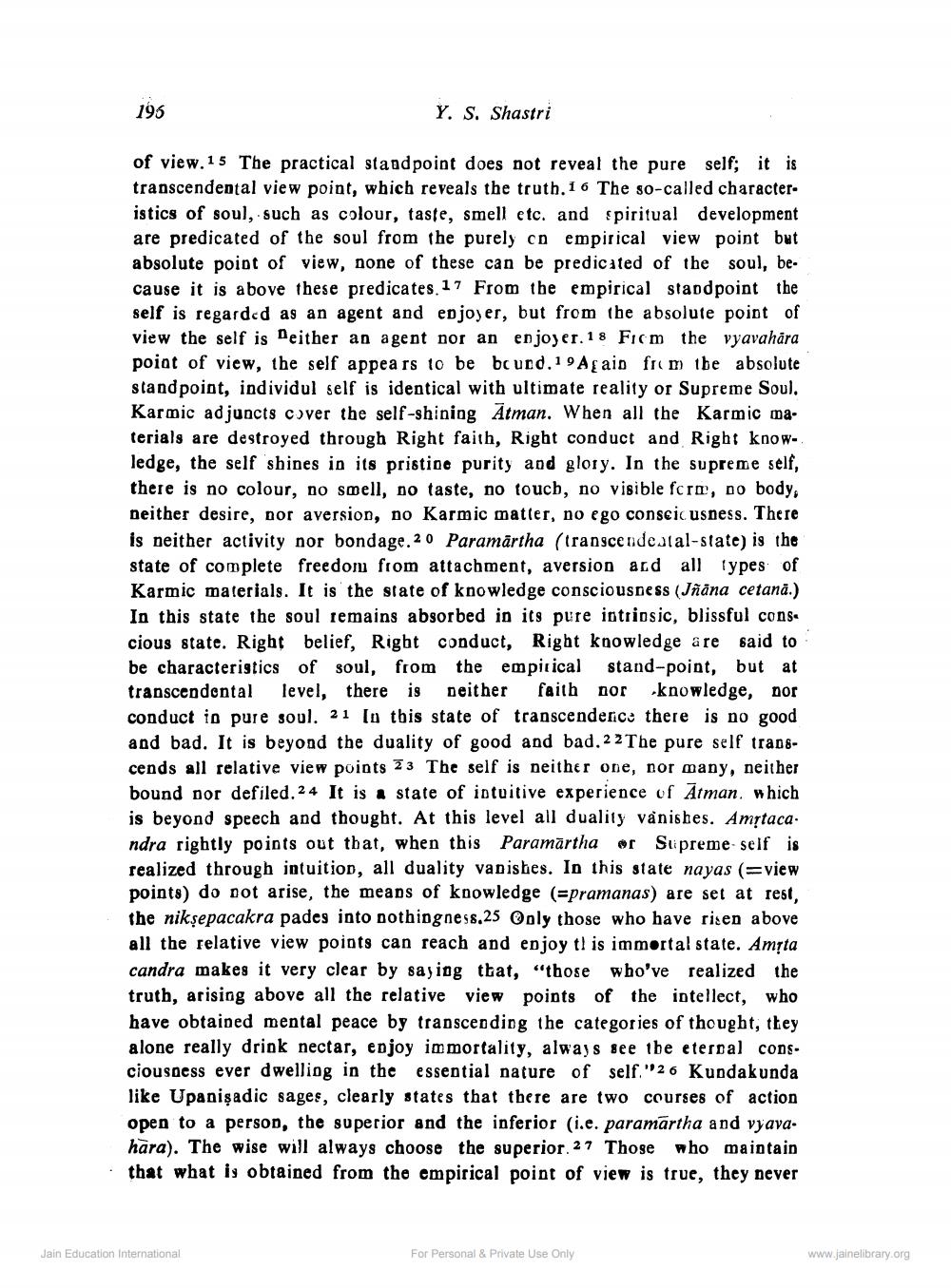________________
195
Y. S. Shastri
of view. 15 The practical standpoint does not reveal the pure self; it is transcendental view point, which reveals the truth.16 The so-called characteristics of soul, such as colour, taste, smell etc. and spiritual development are predicated of the soul from the purely on empirical view point but absolute point of view, none of these can be predicated of the soul, because it is above these predicates. 17 From the empirical standpoint the self is regarded as an agent and enjoyer, but from the absolute point of view the self is neither an agent nor an enjoyer, 18 Fıcm the vyavahāra point of view, the self appears to be beurd. 19 Again from the absolute standpoint, individul self is identical with ultimate reality or Supreme Soul, Karmic adjuncts cover the self-shining Atman. When all the Karmic materials are destroyed through Right faith, Right conduct and Right knowledge, the self shines in its pristine purity and glory. In the supreme self, there is no colour, no smell, no taste, no toucb, no visible form, no body, neither desire, nor aversion, no Karmic matter, no ego conscic usness. There is neither activity nor bondage 20 Paramartha (transcendeutal-state) is the state of complete freedom from attachment, aversion and all types of Karmic materials. It is the state of knowledge consciousness (Jñāna cetana.) In this state the soul remains absorbed in its pure intrinsic, blissful conse cious state. Right belief, Right conduct, Right knowledge are said to be characteristics of soul, from the empirical stand-point, but at transcendental level, there is neither faith nor knowledge, nor conduct in pure soul. 21 lo tbis state of transcendence there is no good and bad. It is beyond the duality of good and bad.22 The pure self transcends all relative view points Z3 The self is neither one, nor many, neither bound por defiled. 24 It is a state of intuitive experience of Atman. which is beyond speech and thought. At this level all duality vanishes. Amịtaca. ndra rightly points out that, when this Paramārtha or Supreme self is realized through intuition, all duality vanishes. In this state nayas (=view points) do not arise, the means of knowledge (=pramanas) are set at rest, the nikṣepacakra pades into nothingness 25 Oply those who have risen above all the relative view points can reach and enjoy tl is immortal state. Amsta candra makes it very clear by saying that, “those who've realized the truth, arising above all the relative view points of the intellect, who have obtained mental peace by transcending the categories of thought, they alone really drink nectar, enjoy immortality, always see the eternal consciousness ever dwelling in the essential nature of self." 26 Kundakunda like Upanişadic sages, clearly states that there are two courses of action open to a person, the superior and the inferior (i.e. paramārtha and vyava.
hara). The wise will always choose the superior. 27 Those who maintain . that what is obtained from the empirical point of view is true, they never
Jain Education International
For Personal & Private Use Only
www.jainelibrary.org




